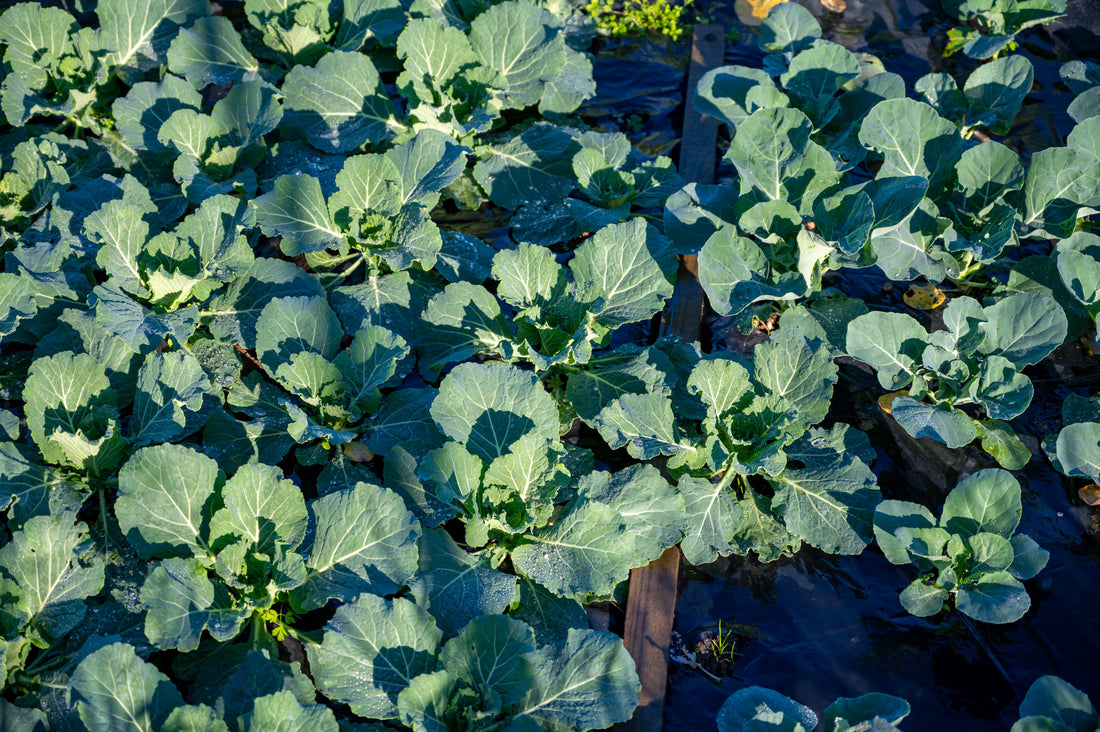Broccoli, scientifically known as Brassica oleracea var. italica is highly nutritious and loved for its crunchy heads and tender stalks.
Growing your own broccoli is simple. But today, we want to address a common problem that some of our gardeners face in winter - broccoli plants not forming heads. So if your broccoli plant isn't forming a head either, understanding the following reasons can help you fix the problem and enjoy a successful harvest.
Ideal Growing Conditions for Broccoli

Broccoli thrives in cool weather and prefers temperatures between 14°C and 20°C. It typically takes 75–100 days to produce a head from sowing, depending on the variety. For the best results, sow seeds in early or mid-autumn and ensure the plants have consistent care throughout their growth cycle.
7 Reasons Why Broccoli Is Not Forming a Head

1. Late Sowing
Late sowing often exposes broccoli to unfavourable temperatures, especially warm weather, which can prevent head formation. To prevent this, sow broccoli seeds in the early or mid-autumn for a cool growing season. If you’ve sown late, consider mulching the soil to keep the roots cool.
2. Extreme Temperatures
Broccoli is sensitive to temperature fluctuations. Prolonged heat or frost can stress the plant, delaying or halting head formation. Use row covers during unexpected cold spells and shade nets to protect plants from extreme heat.
3. Lack of Required Soil Nutrients
Broccoli demands nutrient-rich soil, particularly nitrogen and phosphorus, for healthy growth. A deficiency can lead to stunted plants without heads. Enrich the soil with compost, aged manure, or a balanced organic fertiliser to provide the nutrients your broccoli needs.
4. Lack of Direct Sunlight
Broccoli requires at least 6–8 hours of direct sunlight daily to grow robustly. Plants placed in shady areas are unlikely to form heads. Ensure your broccoli is planted in a sunny spot, or trim back nearby vegetation that may block sunlight.
5. Crowded Plants
Overcrowding reduces airflow and restricts root space, causing competition for resources and poor head development. Space your broccoli plants 45–60 cm apart to give them enough room to thrive. Regularly thin out overcrowded areas if needed.
6. Inadequate Moisture
Inconsistent watering or dry soil can stress broccoli plants, leading to poor head formation. Water deeply and regularly, keeping the soil consistently moist but not soggy. Add a layer of mulch to retain moisture and reduce evaporation.
7. Poor Drainage
Waterlogged soil prevents roots from absorbing oxygen and nutrients, stunting growth and head development. Ensure your soil drains well by amending it with sand or organic matter, or consider planting in raised beds to improve drainage.
If your broccoli plants are not forming heads, it’s essential to address the causes, from planting timing and nutrient deficiencies to moisture management. Even if your broccoli doesn’t produce a head, the leaves are perfectly edible and can be used as a substitute for kale or collard greens in recipes. With proper care, your next crop will likely reward you with the crunchy and delicious broccoli heads you’re hoping for.


 Sign In
Sign In















Let us know your feedback
* Comments must be approved before being displayed.